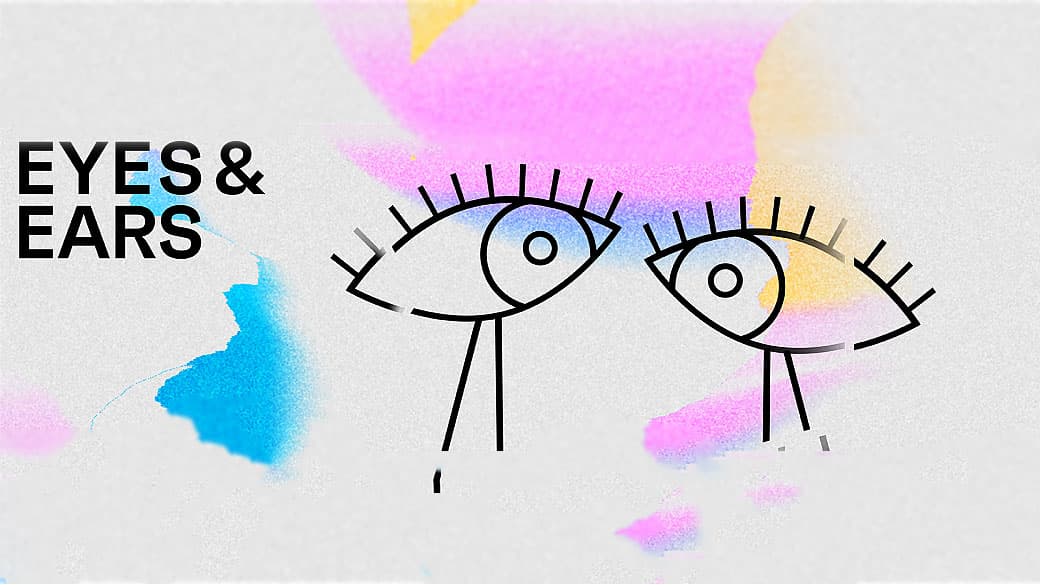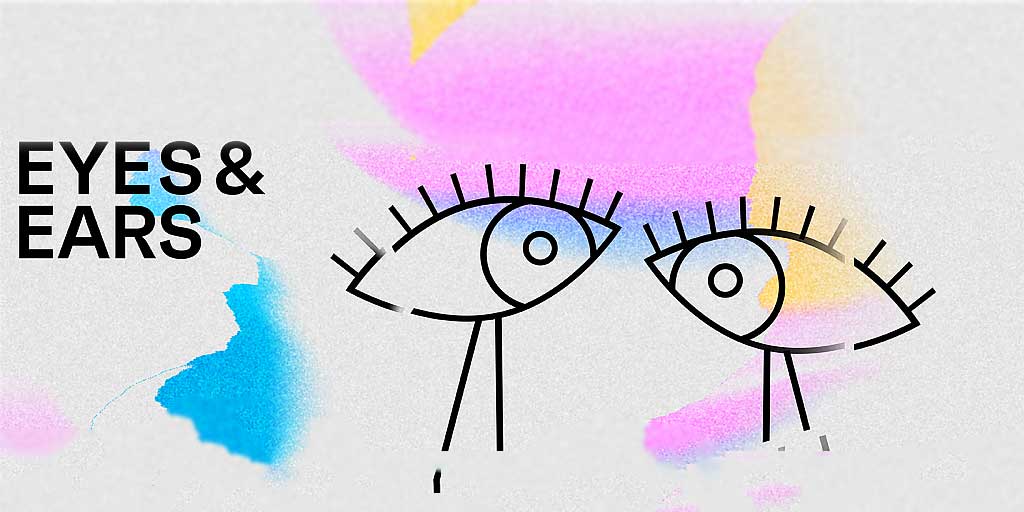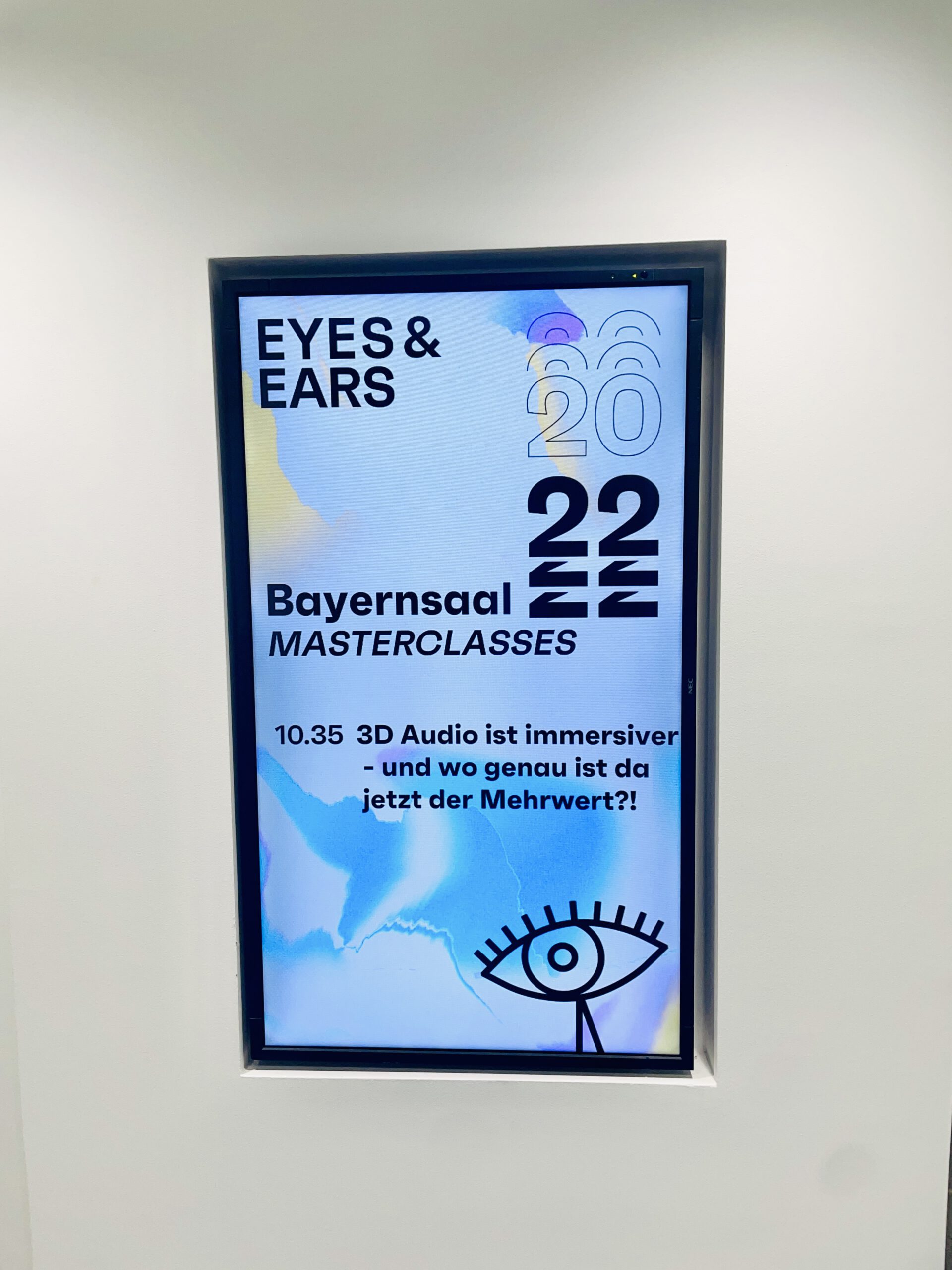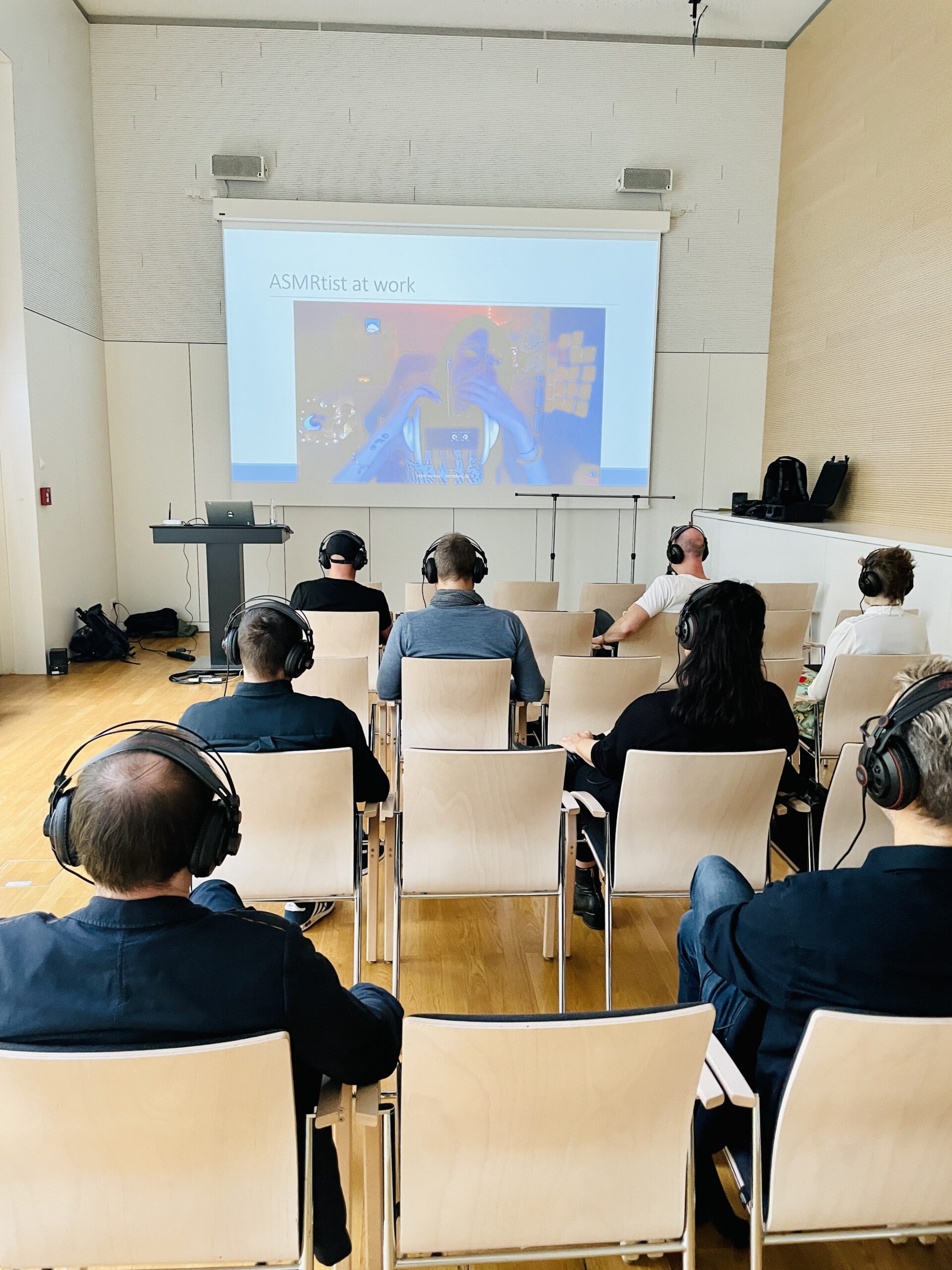
3D Audio Masterclass at EYES & EARS 2022

For more than 20 years, Eyes & Ears of Europe has been offering with the EYES & EARS every year a day full of networking, know-how and concentrated inspiration.
Here, not only media professionals but also young talent meet to learn about the latest trends, innovations and new perspectives in the fields of design, promotion & marketing, and audio engineering for media and entertainment brands from all over Europe.
What is 3D Audio?
Definition and Explanation of 3D Audio Technology
3D audio, also known as immersive audio or spatial audio, is a groundbreaking audio technology that creates a three-dimensional sound field, allowing listeners to perceive the direction and distance of sounds as if they were in a real-world environment.
This technology leverages advanced audio and video technology to simulate natural hearing, providing an unparalleled immersive experience.
In a home recording studio, achieving 3D audio can be done through various techniques such as binaural recording, ambisonics, and object-based audio. These methods enable producers to craft soundscapes that envelop the listener, making them feel as though they are part of the scene.
Importance of 3D Audio in Modern Music Production
In the realm of modern music production, 3D audio is revolutionizing the way artists and producers create and deliver their work. By offering a more immersive and engaging listening experience, 3D audio allows for a deeper emotional connection with the audience.
This technology is not just limited to music; it is also making waves in live sound applications, including concerts and theatre productions, where it enhances the overall sensory experience.
For audio masterclass students, mastering 3D audio technology is a valuable skill that can significantly enhance their music production capabilities and open up new creative avenues.
Brief History of 3D Audio Development
The journey of 3D audio technology spans several decades, with its roots tracing back to early experiments in spatial sound. However, it is the recent advancements in audio technology that have truly brought 3D audio into the mainstream.
The advent of digital audio workstations (DAWs) and sophisticated audio software has enabled the creation of intricate 3D audio environments.
Additionally, the rise of immersive audio formats like Dolby Atmos and DTS:X has accelerated the adoption of 3D audio, making it more accessible and affordable for musicians and producers alike.
Martin Rieger is there bringing his home recording studio
This time I will be present with XRBavaria at a booth. Here we show which inspiring applications there are from the world of XR. Say, what do you do in the media with Augmented Reality, Virtual Reality and the Metaverse.
Martin Rieger’s expertise can help individuals set up their own home recording studio for 3D audio, enabling them to create professional-quality recordings.
Additionally, I am allowed to hold a masterclass:

Masterclass: “3D Audio is more immersive audio – and where exactly is the added value now?”
With his company VRTonung, Martin Rieger is a specialist for 360° audio recordings around the world and 3D audio post-production in the Munich recording studio.
This makes VRTonung the interface to take care of immersive projects from creative storytelling at the beginning to technical implementation.
For more than half a decade, he has dedicated himself to the topic of immersive audio like hardly anyone else in the German-speaking world.
His maxim is not to pretend to be particularly innovative or sustainable with 3D audio, but the trick is to come up with applications that would not even be possible with stereo.
The masterclass also includes various audio files to provide practical examples and exercises, enhancing the learning experience for participants.
Audio engineering content in own home recording studio
There’s a breath of fresh air on the ears: 3D audio is getting a huge buzz from Apple’s new products, Dolby Atmos and ASMR videos on YouTube. But what’s the point of being more “immersive”! So here’s an end to buzzwords and time to show the real added value.
Because in the end, it’s not hype but heralds the next evolutionary stage of listening. Even with standard headphones, it is now possible to experience 3D audio technology from home.
Using a digital audio workstation to manage and create 3D audio content can significantly enhance the quality and precision of your projects.
But how can immersive audio now be used in media, such as marketing, broadcast or metaverse? What there is to know, how it all sounds and what exciting applications there are and will be.
Be there for the audio masterclass with digital audio workstation
Of course, I’ll be busy doing Eyes & Ears stories again. So follow me on Insta if you want to know how 3D audio works:

The Future of 3D Audio
Trends and Developments in 3D Audio Technology
The future of 3D audio is brimming with exciting possibilities, driven by continuous advancements in audio technology and the growing popularity of immersive audio formats.
One of the most promising trends is the integration of artificial intelligence (AI) and machine learning (ML) to create even more realistic and immersive audio environments. This technology is expected to enhance the precision and depth of 3D audio, making it an integral part of virtual and augmented reality experiences.
As the demand for immersive audio experiences continues to rise, audio education and online audio education platforms will play a pivotal role in equipping musicians and producers with the necessary skills and knowledge.
Universal publishing production music and recording studio companies will need to stay ahead of the curve by investing in cutting-edge technologies and nurturing new talent.
In the world of theatre sound engineering and director audio masterclasses, 3D audio technology is set to transform live performances, creating more engaging and immersive experiences for audiences.
As the technology evolves, we can anticipate innovative applications of 3D audio across various fields, from music production to live sound and beyond, heralding a new era in audio media.